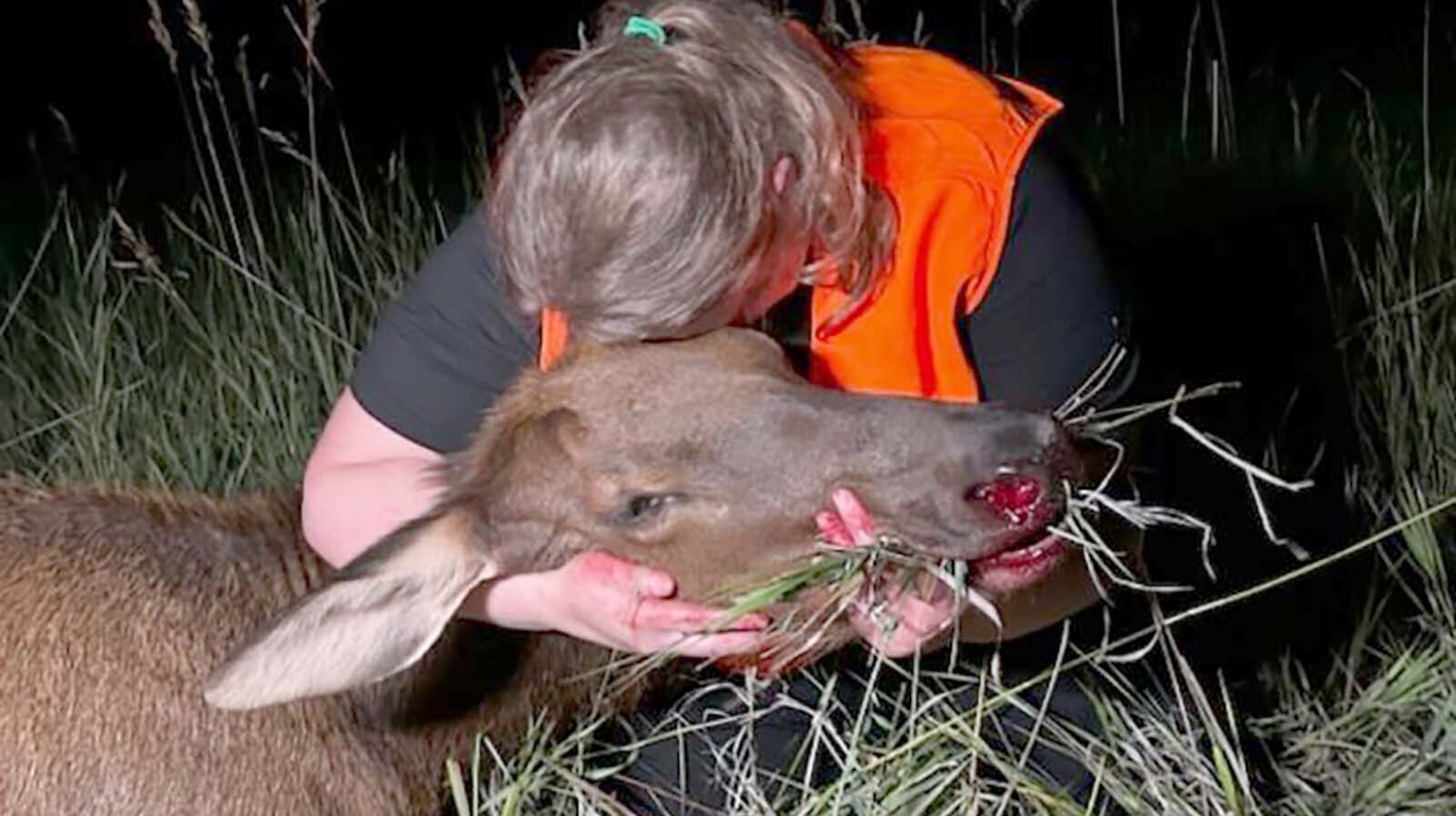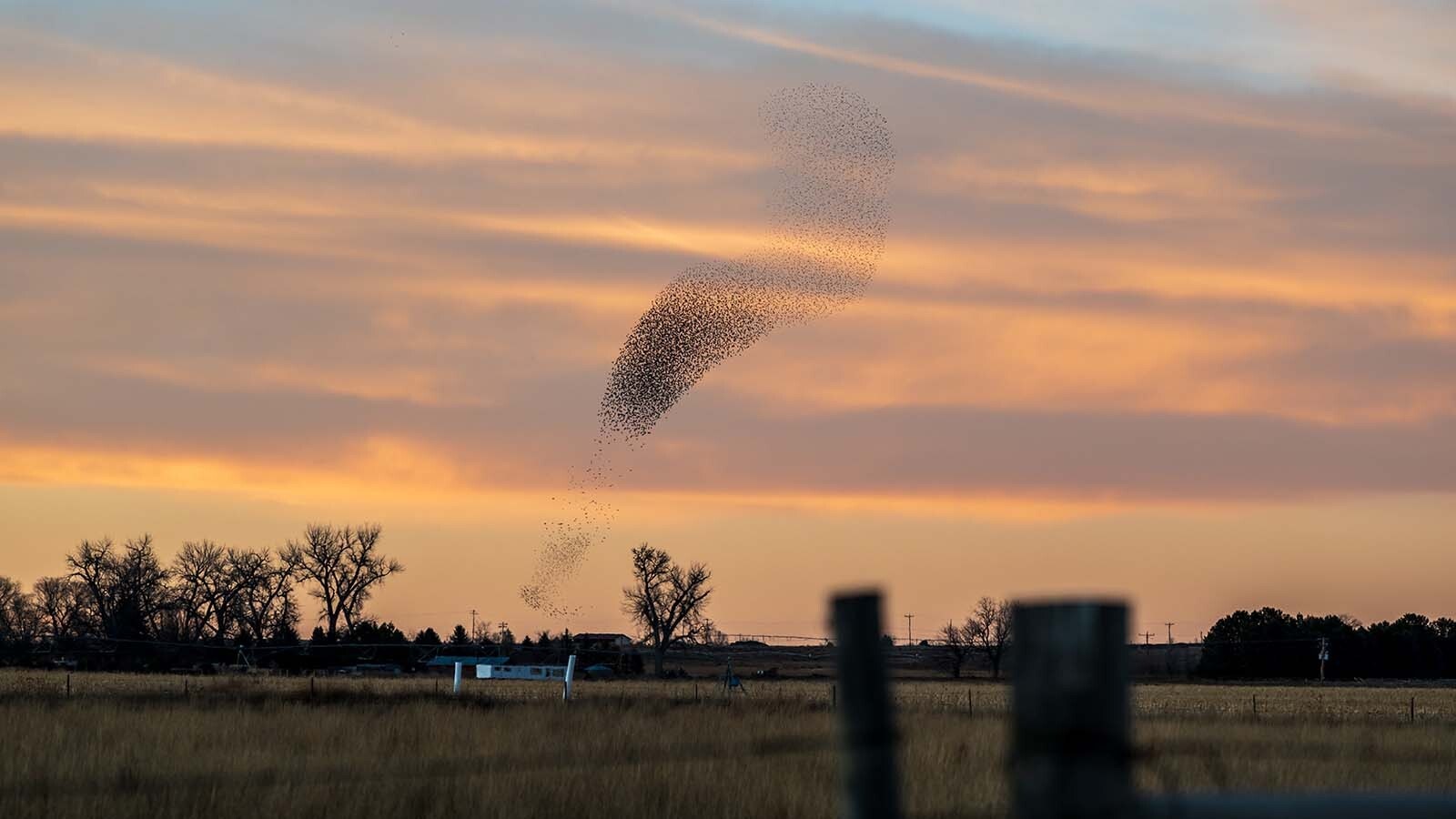When the cow elk Kelli Docker had in her rifle’s crosshairs hit the ground late Friday, she was hit with a wave of emotions that hunters know all too well.
“It was an overwhelming sense of gratitude toward her and how beautiful she was, how beautiful it all was,” Docker, of Laramie, told Cowboy State Daily on Monday.
She had just come home from an early season rifle elk hunt in the Black Hills area near Newcastle. The Black Hills region is one area of Wyoming where an over-abundance of elk has become a problem for landowners.
Elk herds there, and elsewhere in eastern Wyoming, have ballooned to many times more than population objectives set by the Wyoming Game and Fish Department.
Some Wyoming outfitters, local landowners and Wyoming Game and Fish have come up with a way to address the problem: Bring in first-time hunters like Docker.
Switching From Antelope To Elk
Angie and Scott Denny own and operate Table Mountain Outfitters. For years, they have been guiding hunters with special early season big-game tags.
“We mentor hunts for women, youth and wounded warriors. We always looked to antelope for these hunts, because antelope are usually the more prevalent species,” Angie told Cowboy State Daily.
However, antelope in many of Wyoming’s best hunting areas were slammed by the combination of a vicious winter and an outbreak of rare pneumonia, which killed them by the thousands.
With too few antelope in some parts of Wyoming and too many elk in others, the choice was obvious.
“We’ve switched out focus to elk,” Angie said. “We’re trying to inspire people to take up hunting and get some elk at the same time.”
Welcome To The Hunting World
The outfitters coordinate with ranchers who have too many elk on their land, Scott said. The hunters have to cover the costs of their elk tags, but guiding services are free.
Many of the hunters, like Docker, come through the Game and Fish’s outdoor program for women, which introduces women who have never fished or hunted to the outdoors.
The special tags allow them to hunt with rifles as early as August, Angie said. Typically, only archery hunts open this month, while rifle seasons don’t start until mid-October.
Some special late-season tags offer hunters a crack at cow elk well into December, but Scott said Table Mountain Outfitters favors the earlier hunts for wounded veterans or first-time hunters.
“We’re not going to try to take a bunch of new hunters out in zero-degree weather in December when we’re all tired and cranky,” he said.

Not That Easy
And while shooting a cow elk on private property with no competition from other hunters might seem like a slam-dunk, that’s frequently not the case, Scott said.
“Cow elk hunts are hard. It’s one of the hardest hunts,” he said.
That’s because while it might be possible to catch a bull elk by himself, cows are always in bunches. So, there are that many more elk eyes, ears and noses for a hunter and guide to have to try sneaking past.
“On these ranches, they are in huge groups of 200 or 300 elk. If you shoot once, they’re gone. They go somewhere else on another property where they’re safe, and they just stay there,” Scott said.
Trying To Make A Difference
The Dennys said they understand the frustration from all sides regarding the mushrooming population of elk in parts of Wyoming. On one hand, ranchers might feel not enough is being done to control their numbers. On the other, hunters might be upset because it can be difficult to get access to hunt the elk on private property.
While simply opening up access to the ranches might seem like a good approach, Scott said he questions how effective that would be. Elk move around, frequently for several miles at a time. And they move more once they start getting pressure from hunters.
“Just sending people willy-nilly out on those ranches, that might not work. It’s tough with elk. They’re either all there in a particular place, or they’re not, and it’s frustrating,” he said.
Getting first-time hunters out with guides and working with landowners to get a better idea of where the elk are at any given time helps target hunts more precisely, he said.
“We hope we’re making a difference. We’re trying,” he said.
Learning To Hunt
Docker and her husband moved from Kentucky to Laramie about two and half years ago. She’d never hunted, or even held a firearm.
She found out about the women’s hunting program through television.
“My husband and I are avid local news watchers. We saw on the local news that the Game and Fish was looking for new women and youth hunters,” she said.
She went through the Game and Fish’s Hunter Education program, which includes lessons in firearms safety and marksmanship. And Angie also gave her some hunting and shooting lessons.
Her hunt began Friday. She went out with her guide, Mike Saldana, early that morning. Although they saw hundreds of elk, there weren’t any good shot opportunities.
So, they went back to the shooting range for more target practice, and then back out for an evening hunt.
‘She Had A Great Life’
She made her shot right at sunset, and the moon and stars started to come out as they celebrated a successful hunt and started to process the elk carcass.
In the days leading up to the hunt, Docker wasn’t sure how she’d feel about taking an animal’s life.
“I saw her (the cow elk) in my mind’s eye. I saw her in the sun, and in the forest and being free, and knew that one day we would meet, and we did,” Docker said, her voice cracking with emotion. “She gave me her everything. It made me realize what it means to survive and to eat.”
And while the act of taking the elk’s life carried a solemn weight, Docker said she wants to keep hunting.
“I think I love it. Everybody has to eat to survive,” she said. “But this gives it so much more meaning. She had a great life. She didn’t live in a feed lot, she lived wherever she wanted to.”
Not Enough Cooler
Docker said that once the elk was down, she helped with the hard work that follows a successful hunt.
“You can be as hands-on as you want to be. I was there when they gutted her, and I helped skin the carcass,” she said.
After the meat was butchered into steaks and burgers, Docker realized she had a problem.
“They’d told me to bring a cooler for my elk meat, but I didn’t realize just how much meat the elk would give us. All I brought was this little stupid 24-can Igloo cooler. We had to go into town and buy several more coolers,” she said.
She also had the elk’s hide tanned and its skull whitened so she could keep them as mementos of her first hunt.
“I can’t stop thinking about (the hunt) and I can’t stop talking about it,” Docker said. “It was one of the most amazing experiences of my life. The day I got married, and the day I got my first elk – they’re both right up there.”
Mark Heinz can be reached at mark@cowboystatedaily.com.





